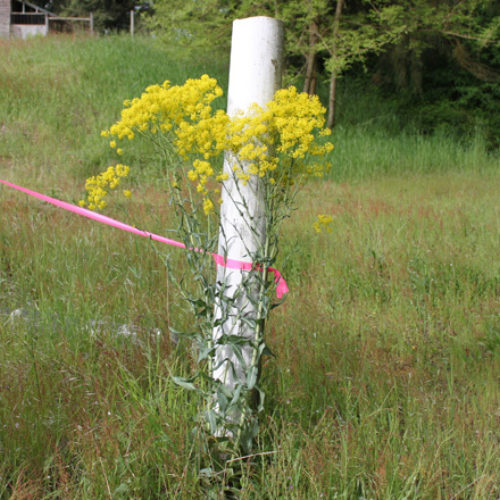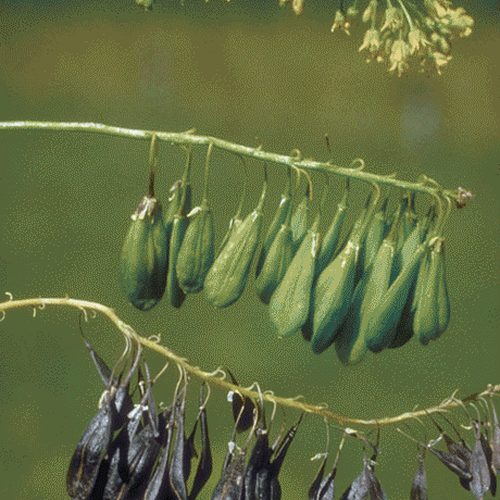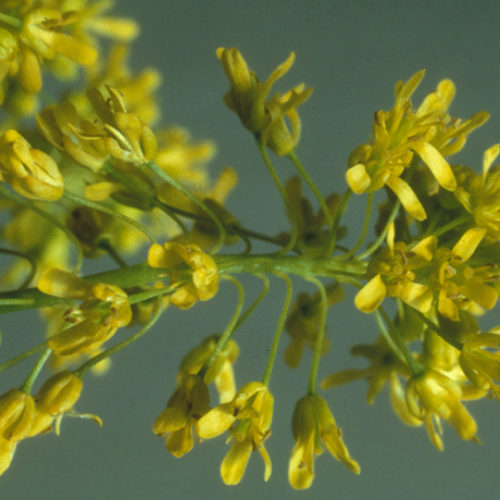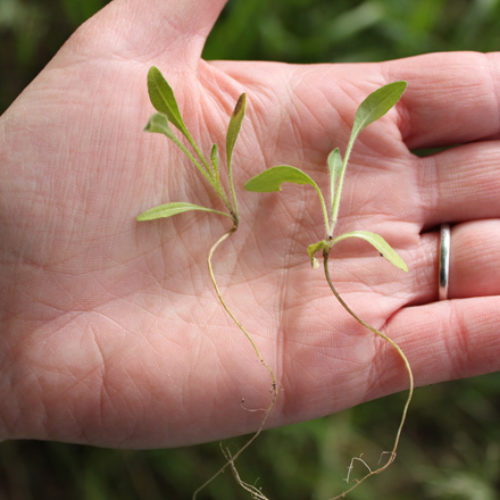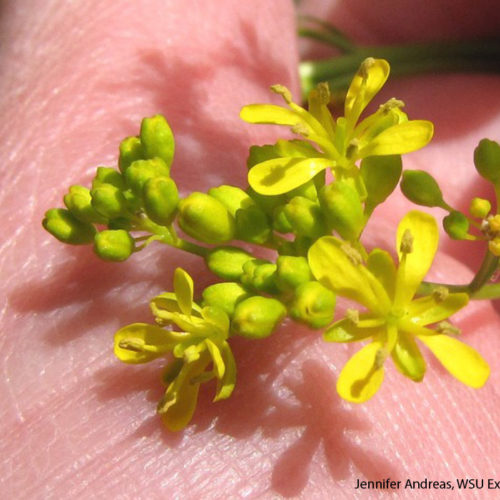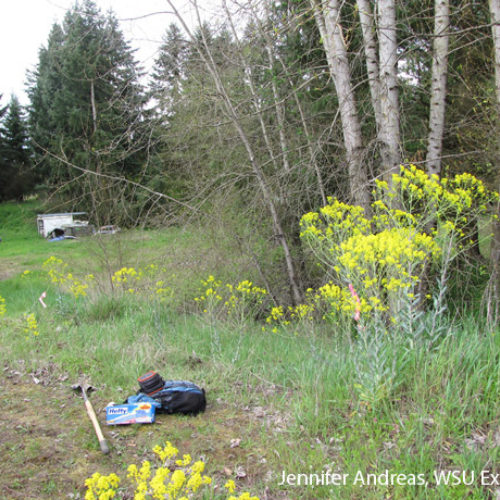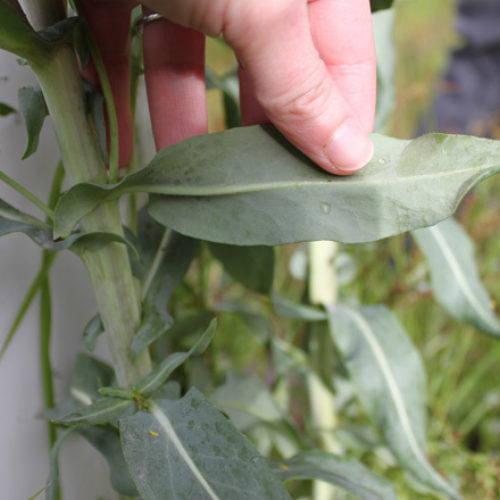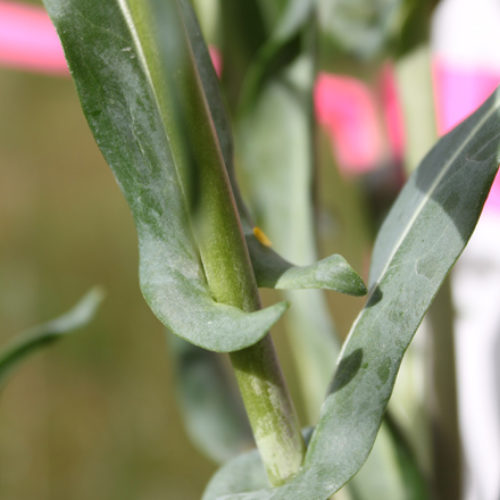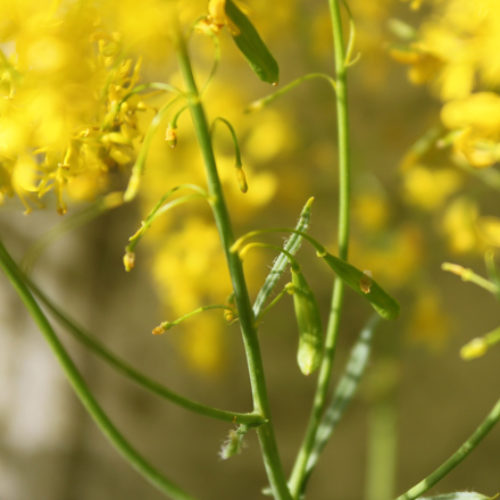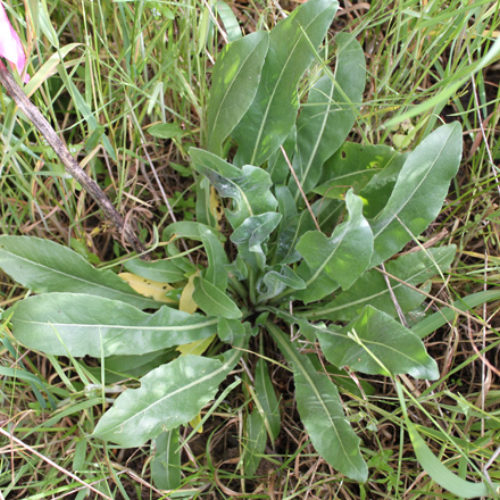Dyer's Woad
Isatis tinctoria
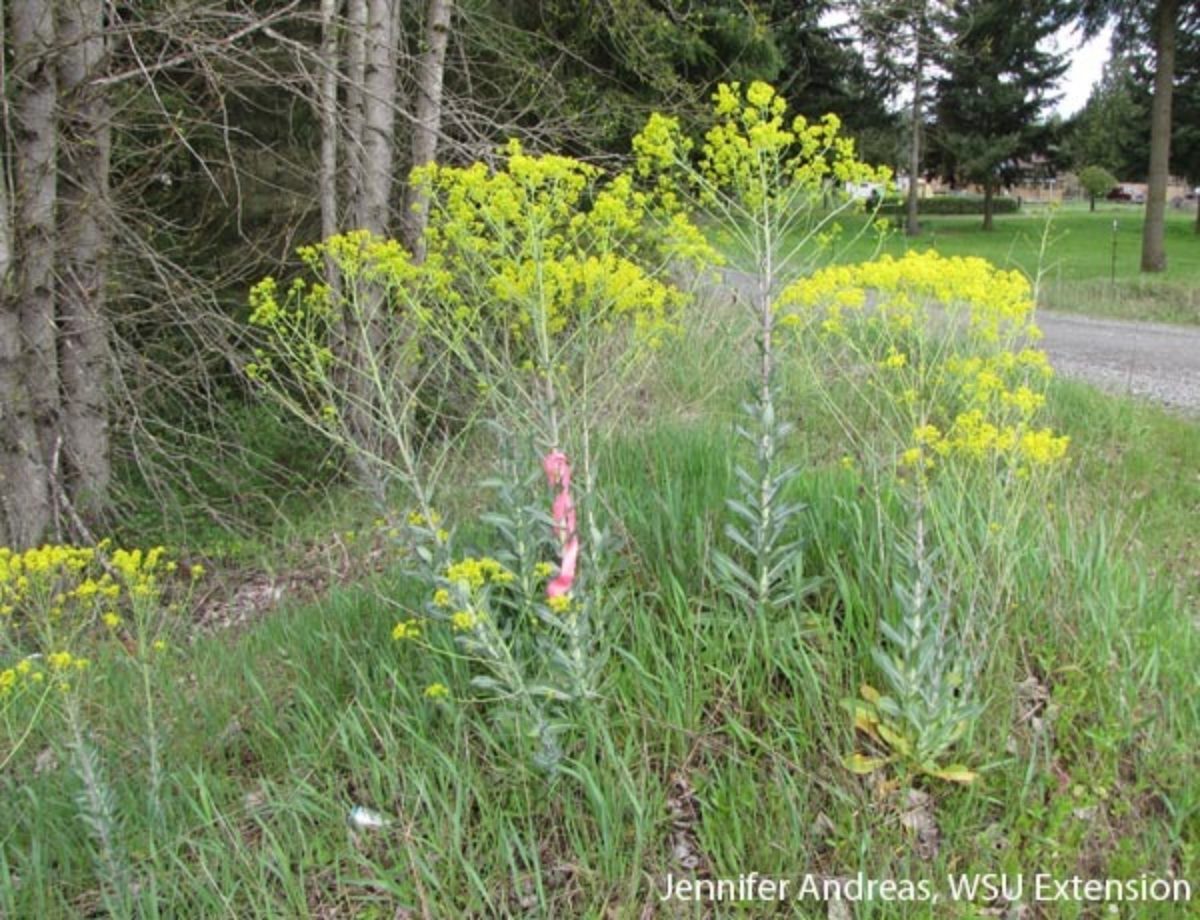
Family: Brassicaceae
Weed class: A
Year Listed: 1988
Native to: Europe, Asia and Northern Africa
Is this Weed Toxic?:
not known to be
Legal listings:
WAC 16-752; WSDA Quarantine list (prohibited plant list)
Why Is It a Noxious Weed?
Dyers woad is a non-palatable, aggressive weed with allelopathic properties. Originally cultivated as a source of Indigo dye, this species escaped cultivation and has a history of establishing across thousands of acres of western rangeland.
How would I identify it?
General Description
Dyers woad grows as a winter annual, biennial or short-lived perennial, ranging from 1 to 4 feet tall, from a 3 to 5 foot long taproot. The basal rosette produces stalked, bluish green leaves covered with a fine hair.
Flower Description
The flowers are small and yellow, cross-shaped with 4 sepals, 4 petals and 6 stamens. The yellow petals are about 1/8 inch wide and just over 1/8 inch long. Flowers are found in terminal clusters on the branch tips.
Leaf description
It has basal leaves, leaves in a radiating cluster at the stem base, and stem leaves. Basal leaves are stalked, bluish green and are up to 7 inches long. Stem leaves are lance shaped, alternate and not stalked. All leaves have a cream-colored mid vein.
Stem description
Stems are branched toward their tips.
Fruit Seed Description
The fruit is a flattened seed pod (silicle), 3/8” long and 1/4” wide, winged and slightly pear shaped and it hangs from a small stalk. Initially the pod is hairless and green, but it matures to a black or dark purplish brown. Each pod produces 1 seed.
Where does it grow?
Dyers woad will establish in rocky soils with minimum water holding capacity, and the highest threat of establishment is in rangelands, pastures and forest lands. Please click hereto see a county level distribution map of dyer's woad in Washington.
How Does it Reproduce?
Dyers woad reproduces by seed, each plant can produce from 350 to 500 seeds, and some plants produce as many as 10,000 seeds.
How Do I Control It?
General Control Strategy
Hand pulling and digging may be the most practical form of control for hard to reach, difficult terrain.
Mechanical Control
Hand pulling is the recommended control option - after the plant bolts, and before seed production. This is considered the only practical control method of hard to reach, or difficult terrain. An active mowing program will control orchard populations of dyers woad.
Cultural Control
In dryland alfalfa fields, dyers woad can be cultivated twice a year for control – once in the spring time before seed production, and again in late fall for the late germinating plants.
Biological Control
The native rust pathogen Puccinia thlaspeos is effective in preventing seed or fruit production. The rust seems to be spreading naturally to new dyers woad populations, and it is controlling further spread (James et al. 1991). Sheep will not voluntarily graze the plant.
Herbicide Control
Please refer to the PNW Weed Management Handbook, or contact your county noxious weed coordinator.
For More Information
See our Written Findings for more information about dyers woad (Isatis tinctoria).
See our postcard for early detection information about dyer's woad.
Report on dyer's woad from the book "Weed Control in Natural Areas in the Western United States"
Asotin County NWCB Fact Sheet on dyer's woad
Pierce County NWCB Fact Sheet on dyer's woad



